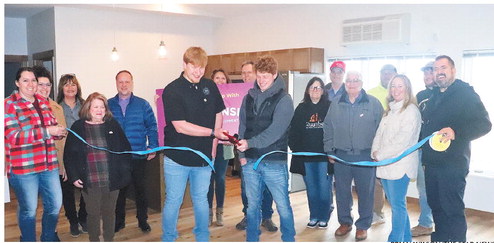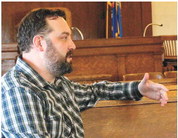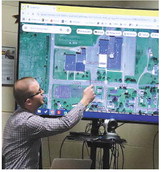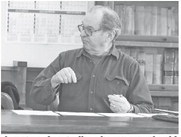Looking outside the box
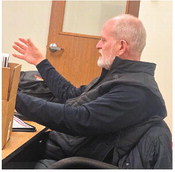

The Medford planning commission is working to open the door for additional housing options in the city.
“We have to keep our eyes and our minds open,” said city coordinator Joe Harris during Monday’s commission meeting. He noted that just because something wasn’t allowed decades ago, it shouldn’t block the city from considering it now.
“We learned that the hard way,” agreed member Peggy Kraschnewski, referring to the city’s long-time stand opposing additional apartments in the city. In more recent years, the city has been actively encouraging apartments and
See COMMISSION on page 4 other multifamily housing to combat a housing shortage and as a way to help attract and retain workers in the community.
City planner Bob Christensen noted the city has done a really good job in building new apartment buildings but said they need to think of the next step for families going into single family homes who may not able to make the leap to “a $439,000 home on Pine St.”
The discussion at Monday’s meeting was over making changes to the city’s housing codes to allow manufactured homes to be placed on residential lots outside of designated mobile home communities. These homes are built in accordances with federal Housing and Urban Development standards with the primary distinction between a modern manufactured home and a modular home is if the transport frame stays with the house when it is delivered to a site or if the frame goes back to the factory, explained Todd Metz of Mid Country Homes in Dorchester.
Traditionally manufactured homes have been placed in designated communities in Medford. These include Mink Capital Terrace and Riverside Terrace where the often the owners of the mobile homes lease the lots.
While older mobile and manufactured homes have a reputation for being boxy and are distinctive for having skirting around their bases where they are placed, newer homes are virtually indistinguishable from site-built homes. The major appeal being that the manufactured homes typically are less costly for the purchaser than building a traditional single family home on a lot.
Mayor Mike Wellner noted that it was difficult to get a home built for under $300,000. He gave the example of the home that the shop class at Medford Area Senior High School built last year on land the city donated. The students provided most of the labor on the project and got donations and discounts on supplies and it still ended up costing $300,000.
“That is the starting point of a site built home nowadays,” Metz said. In addition to working for Mid Country Homes, Metz also is a member of the Wisconsin Housing Alliance.
Metz said he had checked out real estate listings in the area and noted that there were only about 15 homes in the city listed for sale and that of those the ones that were more affordable needed major renovations and work. By comparison even a higherend manufactured home with lot purchase and either a frost-protected slab or basement could cost about $250,000.
The main barrier to having mobile homes located outside of designated communities has been appearance. The older style single-wide and double-wide units many people envision when talking about mobile homes are typically placed on pillars above a slab and have metal skirting that goes along the base.
If that skirting was replaced with a knee-wall to create a crawlspace and had the look of a traditional perimeter foundation or the side siding was continued to the ground level, many of the newer styles of homes would be indistinguishable from site-built homes in the same areas.
Currently, however, the city codes don’t allow mobile homes to be placed on single family residential lots. The city has special interest in getting this changed to allow greater flexibility in getting housing into the former Johnson property the city purchased adjacent to the subdivision on Pep’s Drive.
“We need houses between $200,000 and $250,000 for people to move here and stay here,” Wellner said, noting that attracting and retaining workers for local factories remains a high priority for the city.
Wellner said looking into the housing concerns has been a wake up call, especially for people such as himself who have lived in their house for a long time.
Metz said the city of Medford is not the only one facing affordable housing issues. “Every city has the same problem,” Metz said.
“We built 1,000 of these a year and it has not solved the housing problem,” Metz said.
Revisions to the zoning code to allow for greater flexibility in housing in residential zones will be brought back to the committee for review before going through the approval process which will include a public hearing.
In a related housing matter, the city is looking at potential changes to set standards for the minimum size of homes in residential areas. Christensen proposed a 26-foot wide standard for new homes on residential lots with a minimum ground floor space of 500 square feet. This would effectively prevent “single-wide” units which would be 12 feet wide by 76 feet long.
This revision received support from commission members and will be brought back for additional review before going to public hearing.
Commission members also raised the question of accessory dwelling units (ADU) on existing residential lots, which Metz noted are gaining in popularity especially in more densely developed areas of the country. “They have been getting accepted almost everywhere,” he said.
Often described as mother-in-law flats, ADUs are smaller homes that would be placed as a second home on a residential lot. Christensen noted that in his time with the city he had not had anyone ask for approval for these and said that under current codes they would not be allowed in single family home areas.
In other business, committee members:
• Recommended a rezoning request for 526 W. Broadway Place to allow the former insurance office to be converted and used as a single family home. “What goes around, comes around,” Christensen said, noting the property had in the past been a residential property that had been rezoned for commercial use. The rezoning request goes to the city council for final approval later this month.
• Discussed regulating shipping containers and other similar units in residential and non residential areas of the city. Christensen proposed a new zoning ordinance which would define shipping containers as well as storage pods used for moving and during renovations. Under the proposal, the units would be allowed for up to 30 days in residential areas and for up to 90 days in commercial and industrial areas. Commission member Dave Zimmerman supported keeping them out of residential areas, but questioned putting limits on business use of them, noting that it could prevent businesses from being able to expand. While it currently has not been a problem in the city, Christensen noted that they do not have anything that would restrict the units from being placed now.
“Without that we couldn’t stop them,” Kraschnewski said, noting that if they put rules in place after it became a problem, they couldn’t do anything about existing ones because they would be grandfathered in to the code. An option was suggested to flexibility for commercial use that would take place for more than 90 days to for through a conditional use permit process or have to get approval from the planning commission. Christensen said the proposed ordinance would not impact storage units at construction sites.
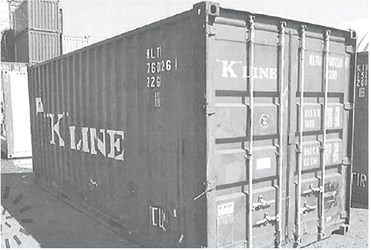
City Planner Bob Christensen gave members of the planning commission this image of a shipping container as an example of what the city is hoping to regulate use of in residential and commercial areas of the city. Under a proposed ordinance they would be allowed for 30 days in residential areas and longer in other areas with the potential for long term use in industrial and commercial applications with planning commission approval. SUBMITTED

